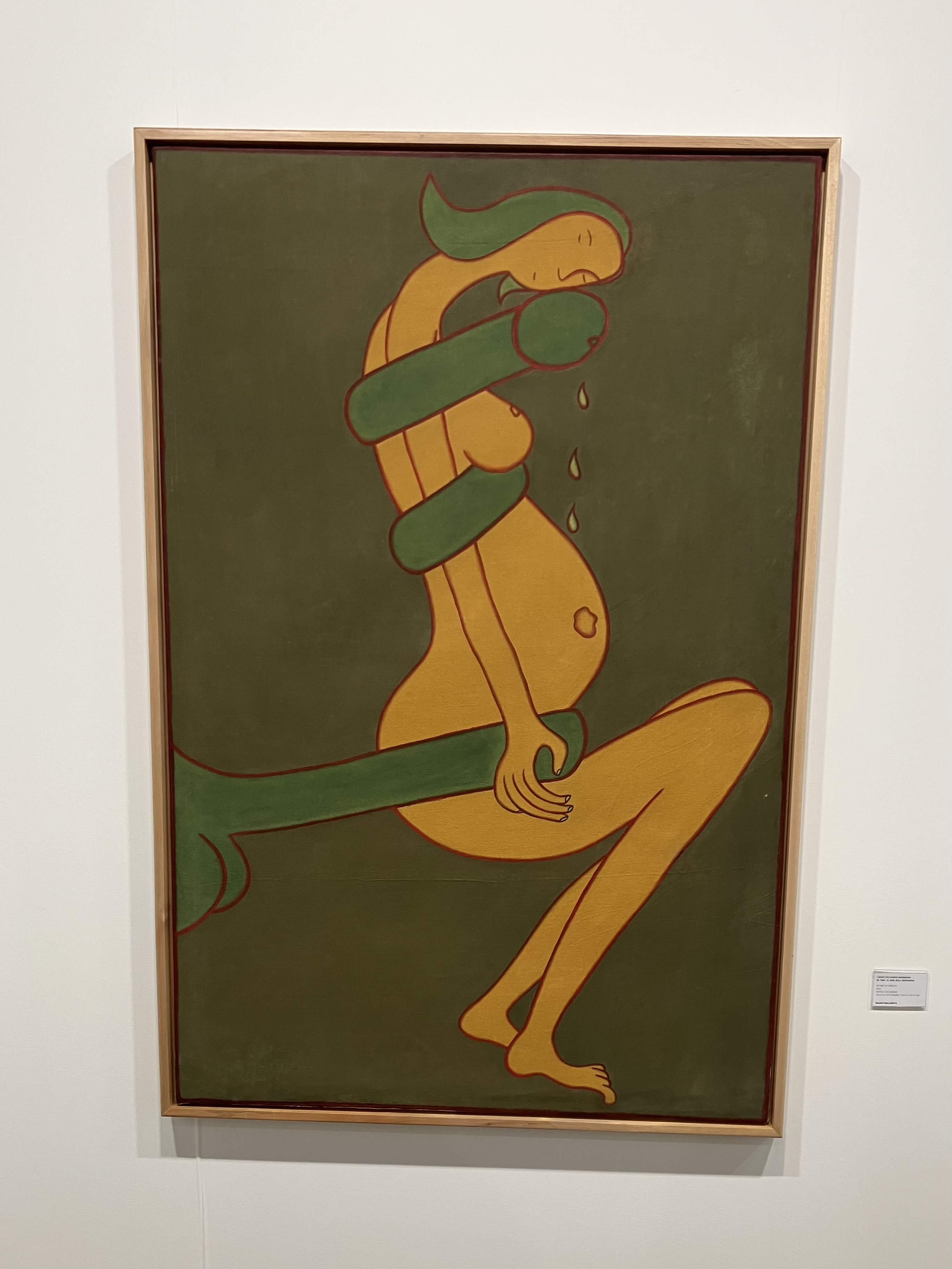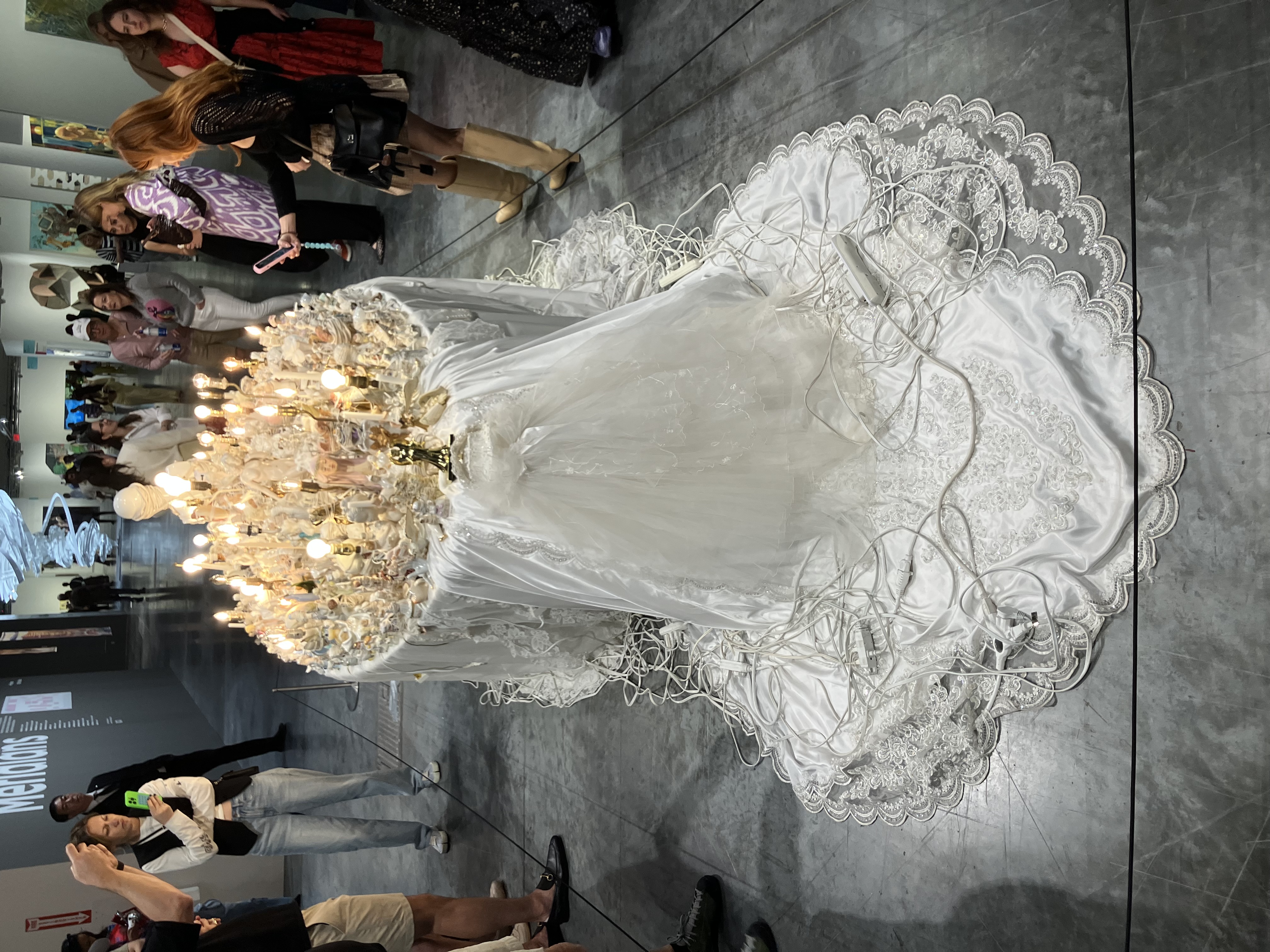The most wonderful time of the year? Art Basel Miami Beach!

From Dec. 6-8, prestigious art dealers, esteemed museums, dedicated foundations, discerning art connoisseurs, top-tier media, A-list celebrities, patrons of the arts, passionate art enthusiasts and private collectors flooded Art Basel Miami Beach. Over 75,000 global attendees from the Americas, Europe, the Middle East, Asia, and Africa attended the premier cultural event. The 2024 edition - the 22nd iteration of the fair and the first under the direction of Bridget Finn - showcased an impressive and diverse roster of 286 world-class galleries representing 38 countries and territories, with two-thirds originating from the Americas (Argentina, Brazil, Canada, Colombia, Guatemala, Mexico, Peru, the United States, and Uruguay).
To widespread acclaim, Finn’s vision brought new life and leadership to Art Basel Miami Beach, and unveiled a reinvigorated artistic program that set a fresh tone for the fair.
“It was an ecstatic feeling to finally open the doors of our show to visitors, after more than a year of planning with our exhibitors and their artists, our Selection Committee, the Art Basel team, partners, and institutional collaborators. I am extremely proud of innovations we introduced this year – from the repositioning and reconceptualization of Meridians to the roll-out of a new booth model, which allowed us to welcome many vital new voices and perspectives in the main sector of the show,” said Bridget Finn, Art Basel Miami Beach Director.
Welcoming 34 first-time exhibitors, the largest influx of new galleries in over a decade, visitors enjoyed new perspectives, voices, collaborators, performances, projects and presentations. To support smaller galleries, Finn introduced new entry-level booth options.
The fair also elevated and expanded its Art Basel Shop with over 2,000 square feet (across three fair locations) of exclusive products and collectibles including glowing Kenny Scharf wall light fixtures, scarves, tote bags, t-shirts, golf balls, beach towels, and more. And, the new Art Basel App offered attendees an interactive and innovative experience to explore art - ultimately affording users a deeper connection with the artists.

Speaking of a deeper connection with the artists, CultureOwl Magazine is excited to share with you some of our favorite stand-outs and delve into the artist behind the masterpiece.
The SURVEY sector focused on singular works of art created prior to 2000, and seventeen galleries participated. Set in the corner of the exhibition space was Singapore’s Gajah Gallery, which presented Indonesian artist I Gusti Ayu Kadek Murniasih affectionately known as Murni. Her provocative and deeply personal paintings and cotton and wood sculptures revealed the artist’s life of suffering and private pain. “Her works that reclaimed her sexuality and body, scarred with the traumas of rape and years of demanding labour, stood in sharp contrast to a culture that favoured women’s purity and passivity,” said Gajah Gallery.

Murni was born in Bali in 1966. The tenth child in a poor family, she witnessed their financial struggle and had no access to school. At just seven years old, her father raped her. The artistic child never spoke of the sexual abuse, scratching leaves to express her creativity instead. She became a domestic helper at 10 years old, then a seamstress, and pursued her art as a 16-year-old jewelry maker. But poor eyesight quickly ended her artistic endeavor, forcing her to become a babysitter. At 28, Murni was married but couldn’t have children - an unfortunate result of a previous uterine surgery. Her husband wanted a second wife who could bear his children, but Murni refused polygamy and asked for a divorce. Allegedly, she was the first Balinese woman to ever file for divorce. And, the divorce was not finalized until years later when her husband’s lover became pregnant.
Murni suffered a childhood of poverty, tiring labor and traumatic incest (which she never spoke about for thirty years.) As an adult, she experienced a broken marriage and late stage ovarian cancer. Following her disease diagnosis, the artist produced various iron sculptures with the welding help of a blacksmith. The work, depicting the surgeries and more trauma she was undergoing, resembled a merging of birdcages and skeletons. About a month after finishing the sculptures, Murni passed away in 2006. In spite of years filled with tragedy, the artist persevered, fell in love, and created magnificent art expressing female desire and sensuality. “I paint to feel that I exist,” she said towards the end of her life. Her work has been seen at the Carnegie Museum of Art, University of Chicago, and more.
Next up: the KABINETT sector, which offered select and curated presentations (mini booths within booths) from over 24 galleries. The New York-based Hirschl & Adler Modern showcased Purvis Young’s dreamlike canvas interpretation of the bebop jazz great Thelonius Monk. Young’s raw work, known for its vivid and saturated colors focused on Black Americans, reflected “what’s on my mind,” as the artist once said.

A self-taught inner-city Black artist, Young was born in Liberty City in 1943 to Bahamian parents. He never attended high school, and served a prison term as a teenager. The confining walls could not confine Young’s love of mural art, and he began drawing. Later, he was inspired by Van Gogh, El Greco, Picasso, Rembrandt and many other masters while spending time in the public library devouring art books. Now living in Overtown, Young made use of any and all materials for his collage canvases - books, rugs, cardboard, furniture, metal, magazines, fabrics, and even wood doors. He rode his bicycle around the streets bearing witness to his urban community riven with strife, and would “paint what I see” - Black angels, pregnant women, ancestors, funerals, refugees and protestors were documented within his political art commentary.
Young was often referred to as the "Picasso of the Ghetto,” and received the ‘Lifetime Achievement Award’ in 2006 from The Black Archives Research Foundation of South Florida. The cult contemporary folk artist, who suffered from diabetes and had a kidney transplant, died just four years later at the age of 67. Celebrity collectors of his work range from Jim Belushi, Oprah Winfrey and Morgan Freeman to David Byrne, Jane Fonda and Lenny Kravitz. His work has been seen at The Met, Rubell Family Collection, American Folk Art Museum, the Smithsonian and others. “I try to solve how every man could get along; put honey in the sky where it could drip and make the world sweet,” Young said.
We made our way to the NOVA sector, designed to provide emerging artists with a platform. The invited younger galleries showcased work created within the last three years by up to three artists, and 21 galleries presented 40 artists. Brazilian roots, African ancestry and Candomblé religious storytelling came together powerfully at Rio de Janeiro’s Portas Vilaseca Galeria exhibit. And, artist Nádia Taquary’s work shined.

Born in Salvador de Bahia in 1967, Taquary still lives and works there. The Afro-Brazilian talent, known for exploring and preserving her rich and deeply spiritual heritage, showcased part of her series “Oriki: what cannot be seen.” Captivating statuesque figures blurred the line between objects and bodies - haunting, evocative, thought-provoking and forcing the viewer to reflect. These elevated female sculptures speak to a sacred and pre-colonial Yoruba history, as the empowered goddess protagonists are given regal status draped in heavy rows of beads, wood, Cowrie shells, straw and bronze that celebrate the African diaspora.
Taquary has exhibited at the Bakehouse Art Complex, Fowler Museum and Museum of Arts and Design. PAMM has acquired her pieces. Her art is found in private collections across the globe. Even the famous singer-songwriter Gilberto Gil is a fan.
Marking its fifth anniversary at Art Basel Miami Beach, the MERIDIANS sector was not to be missed and simply could not be missed as it exhibited large-scale art. New York’s P.P.O.W Gallery presented artist Portia Munson’s monumental “Bound Angel.” During her second MERIDIANS appearance, the 63-year old American artist and feminist provokes much-needed conversation surrounding consumerism, mass production, the environment, gender equality, sexism, societal norms, and controlling manipulation. “She’s filled with all of this information, and these constraints that we start accumulating in our unconscious,” said the artist of this particular monochromatic piece.

Discarded silky and laced white wedding dresses envelop a long oval-shaped dining table, which is adorned like an altar with hundreds of found alabaster white objects: ceramic Virgin Marys, porcelain cherub angels, candles, kitschy lamps, snow globes, electrical cords, glass figurines, soap dispensers, and more - individually bound and stifled by string and cord, and collectively to the repressive ideals of chastity, beauty and femininity. Munson’s work takes on the powerful form of an anonymous, constrained bride with eyes closed and covered with rope. The artist attended Cooper Union, was awarded residency in Italy and has exhibited at Rockefeller Center.
“Across the board, galleries presented truly ambitious, rare, and in some cases career- and canon-defining proposals, which have been placed in first-rate collections and sparked significant future conversations for the art world. I am deeply grateful for the trust they lent to me for my first edition,” Bridget Finn, Art Basel Miami Beach Director added.
Art Basel Miami Beach did not disappoint in introducing a new generation of emerging talent, showcasing cutting-edge art, and celebrating the significant works by modern and contemporary masters across five continents. The fair’s local economic impact, $547 million, hit a record high this year. And, it returns Dec. 5-7, 2025.
Similar Posts

Crossroads of Culture: Highlights from Art Basel Miami Beach 2025

Spotlight Series: Artists who took center stage during Miami Art Week

Savor the Season: Bulla Gastrobar Unveils a Spanish-Inspired Fall Menu

The Sound Inside Us: How Music Rewires the Mind and Restores the Soul

The Colosseum’s New Encore: From Gladiators to Global Music Stages

Experience World-Class Performances for Less with Tomorrow's Stars

Miami's Lincoln Road Turns Into a Free Open-Air Sculpture Garden for Miami Art Week 2025

From Sacred Rituals to Global Stages: A Living History of Theater

The Evolution of Culture Through the Arts

A Culture Lover’s Sarasota, Florida Guide: Art, Performance & Creative Things to Do

The Ultimate Hollywood Florida Arts & Culture Guide
